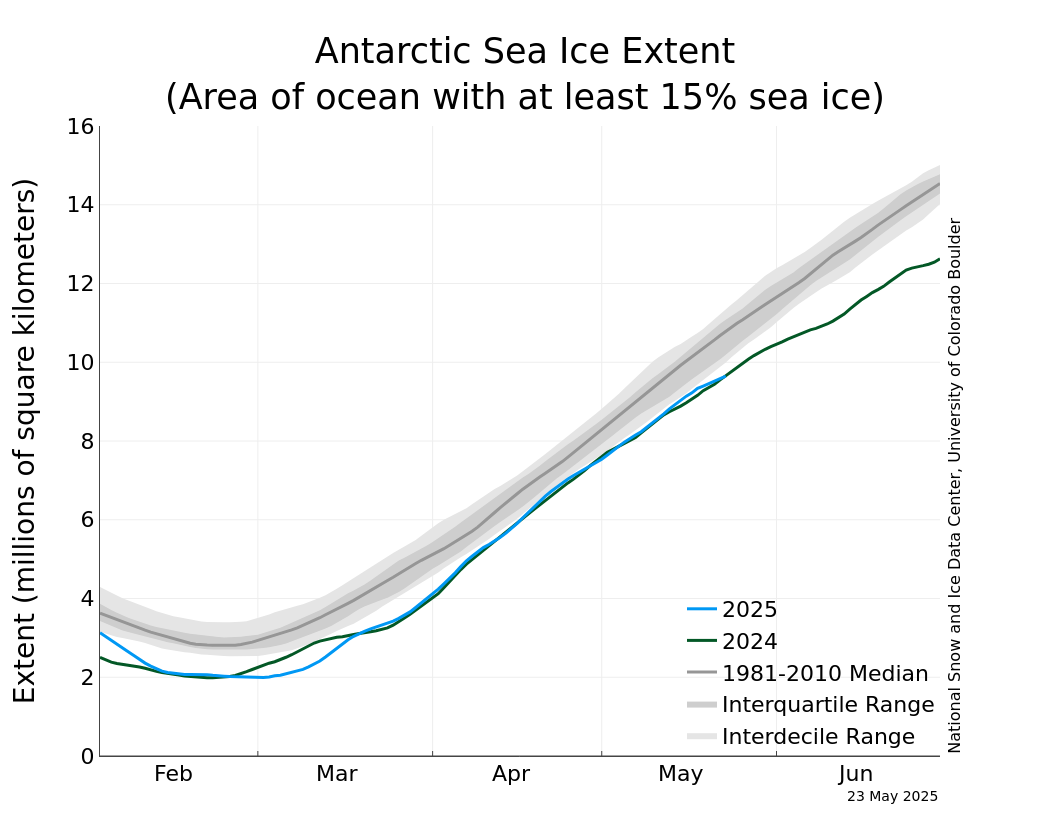University of Washington: Record-low Antarctic sea ice can be explained and forecast months out by patterns in winds
https://www.washington.edu/news/2024/12/06/record-low-antarctic-sea-ice-can-be-explained-and-forecast-months-out-by-patterns-in-winds/December 6, 2024
Record-low Antarctic sea ice can be explained and forecast months out by patterns in winds
Hannah Hickey
UW News
Amid all the changes in Earth’s climate, sea ice in the stormy Southern Ocean surrounding Antarctica was, for a long time, an odd exception. The maximum winter sea ice cover remained steady or even increased slightly from the late 1970s through 2015, despite rising global temperatures.
That began to change in 2016. Several years of decline led to an all-time record low in 2023, more than five standard deviations below the average from the satellite record. The area of sea ice was 2.2 million square kilometers below the average from the satellite record, a loss almost 12 times the size of Washington state. The most recent winter’s peak, recorded in September 2024, was very close to the previous year’s record low.
University of Washington researchers show that the all-time record low can be explained by warm Southern Ocean conditions and patterns in the winds that circled Antarctica months earlier, allowing forecasts for sea ice coverage around the South Pole to be generated six or more months in advance. This could support regional and global weather and climate models.
…
“Since 2015, total Antarctic sea ice area has dramatically declined,” said lead author Zac Espinosa, a UW doctoral student in atmospheric and climate science. “State-of-the-art forecasting methods for sea ice generally struggle to produce reliable forecasts at such long leads. We show that winter Antarctic sea ice has significant predictability at six- to nine-month lead times.”
…
https://doi.org/10.1038/s43247-024-01772-2
https://www.democraticunderground.com/?com=view_post&forum=1127&pid=168541

